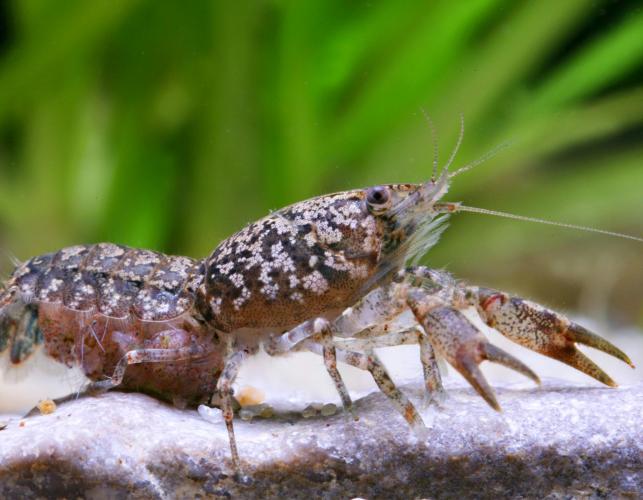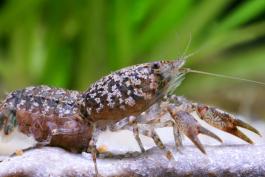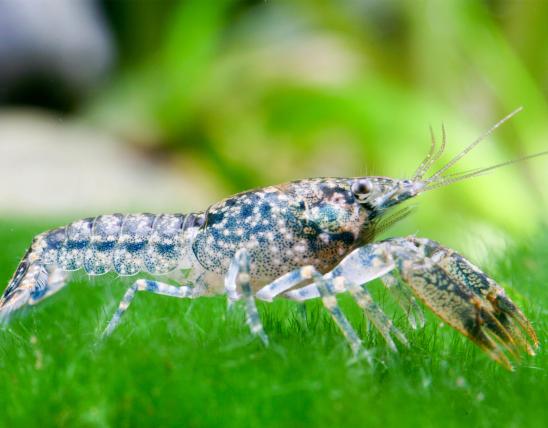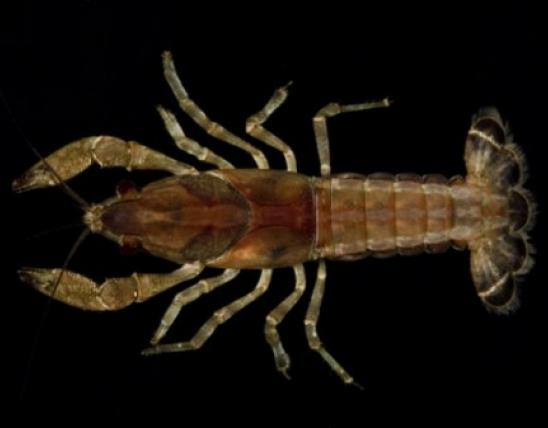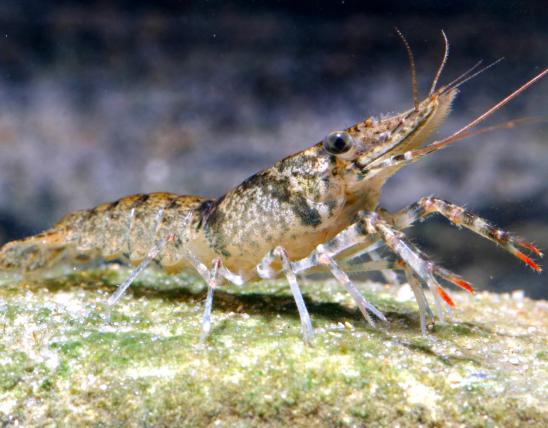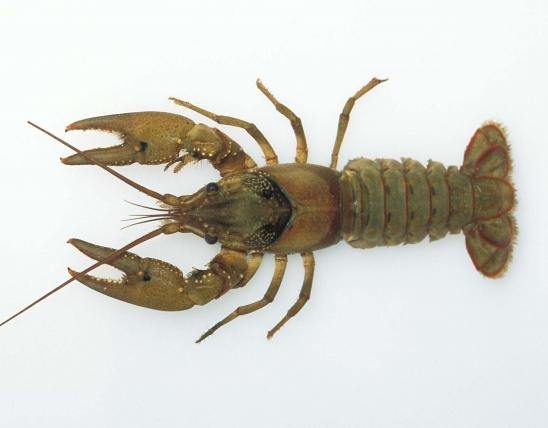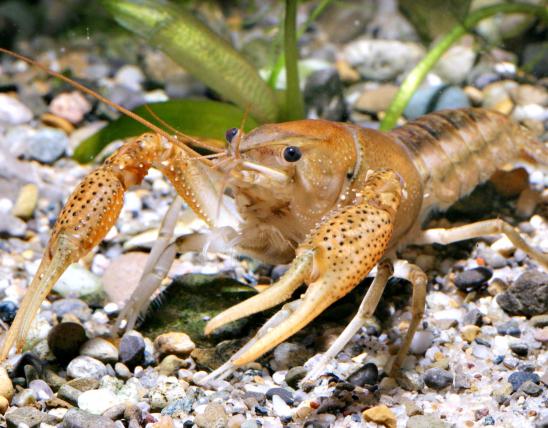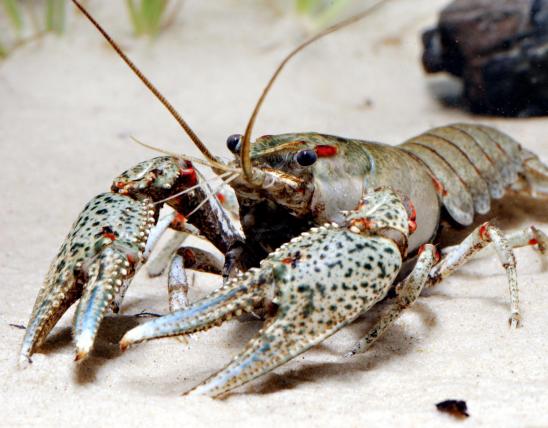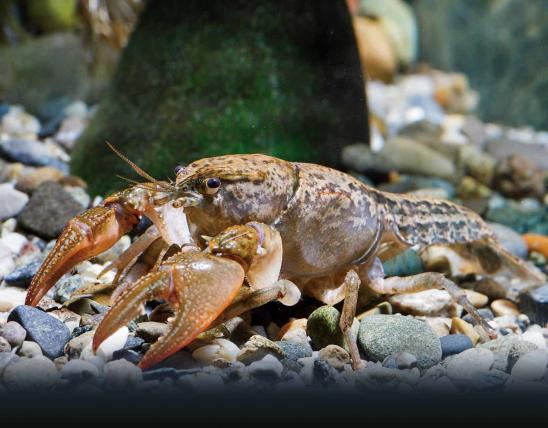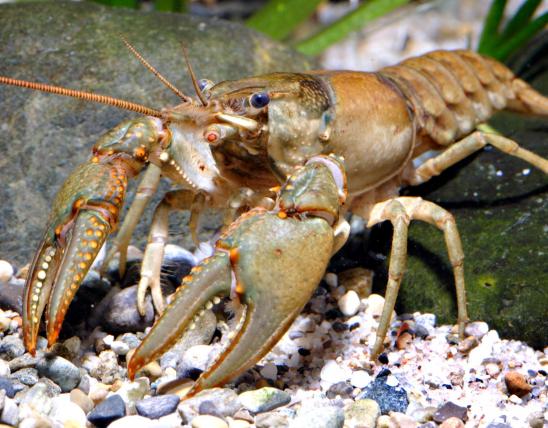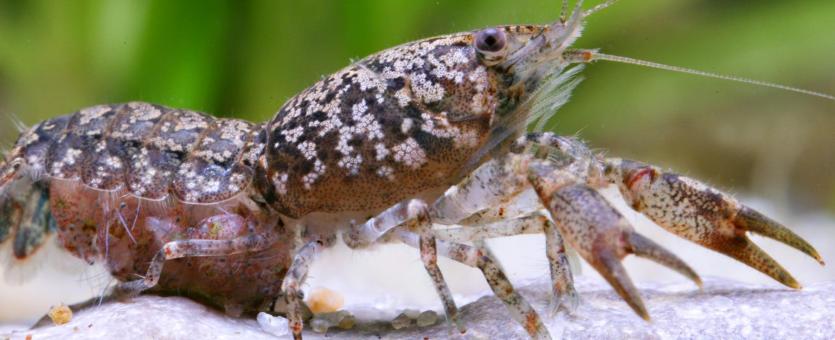
Shufeldt's dwarf crayfish is one of two Missouri species of dwarf crayfish, which are appropriately named for their size. Both are reddish brown to gray, with a paired series of dark, wavy stripes or dashed lines along the dorsal surface. The tail fan usually has a dark central blotch. The pincers are narrow and long. Shufeldt's dwarf crayfish is distinguished from the similar-looking Cajun dwarf crayfish by examining the male reproductive structures, which are straight in Shufeldt's and curved in the Cajun. The two are rarely found in the same body of water.
Our two dwarf crayfish can be distinguished from the young of other lowland crayfish by the conspicuous dark pigment in the tail fan, and the lengthwise dark stripes or lines on the carapace. Also, the rostrum (pointed, noselike structure between the eyes) is flat, without a central troughlike depression.
Adult length: 1 to 1½ inches. Most do not get much larger than an inch.

Occurs sporadically throughout the Bootheel lowlands and north along the floodplain of the upper Mississippi River.
Habitat and Conservation
Dwarf crayfish are found in shallow, temporary pools during wet seasons, including swamps, sloughs, and roadside ditches. During periods of drought, Shufeldt’s dwarf crayfish, though not technically burrowers, retreat to cells they dig in mud or moist soil.
Food
Crayfish are generally omnivores, eating a wide variety of plant and animal materials.
Status
While apparently secure over its entire range, this species is vulnerable to being extirpated from the state and is listed as a species of conservation concern. It appears that Shufeldt’s dwarf crayfish is dominant over the Cajun dwarf crayfish, and when the two occur in the same water, Shufeldt’s outcompetes the Cajun. This may explain why, in the state of Louisiana, Shufeldt’s seems to be expanding its range while the range of the latter is shrinking.
Life Cycle
Breeding can occur at almost any time of year the crayfish are active, often with two seasonal peaks: in late winter to early spring, and in midsummer. Although some young hatch, grow, and mate during their first year, most mate for the first time the next spring, when they are nearly one year old. As with other crayfish, as they grow they shed their shell-like exoskeletons. Unlike many other species, dwarf crayfish breed while still less than 1½ inches long.
Human Connections
Because of their small size, dwarf crayfish are not generally used by humans as food or bait. At least one researcher has suggested that Shufeldt’s dwarf crayfish might be useful as a forage species for pond fish such as fingerling bass and sunfish.
The story behind the name: This small crayfish was first described by the zoologist Walter Faxon in 1884 from a specimen collected the previous year by Robert Wilson Shufeldt near New Orleans, Louisiana. Thus Faxon named this crayfish after the collector. Shufeldt (1822-1895) contributed to several areas of science, but he is also remembered as an avowed white supremacist and for his scandal-ridden personal life, which led to his dismissal from his post at the Smithsonian Institution and to a US Supreme Court case involving bankruptcy and alimony.
Ecosystem Connections
Dwarf crayfish are eaten by the fish, turtles, wading birds, and other vertebrates that share their habitat.
